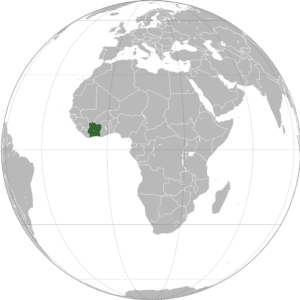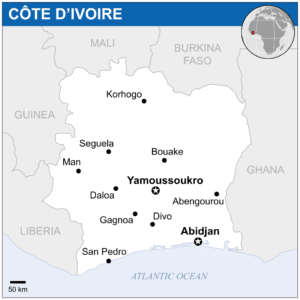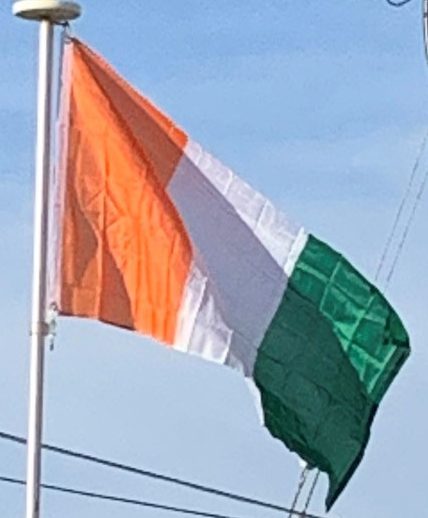Introduction:
Ivory Coast or Côte d’Ivoire, officially the Republic of Côte d’Ivoire, is a country located on the south coast of West Africa. Ivory Coast’s political capital is Yamoussoukro in the center of the country, while its economic capital and largest city is the port city of Abidjan. It borders Guinea and Liberia to the west, Burkina Faso and Mali to the north, Ghana to the east, and the Gulf of Guinea (Atlantic Ocean) to the south.

Before its colonization by Europeans, Ivory Coast was home to several states, including Gyaaman, the Kong Empire, and Baoulé. The area became a protectorate of France in 1843 and was consolidated as a French colony in 1893 amid the European scramble for Africa. It achieved independence in 1960, led by Félix Houphouët-Boigny, who ruled the country until 1993. Relatively stable by regional standards, Ivory Coast established close political and economic ties with its West African neighbors while at the same time maintaining close relations to the West, especially France. Ivory Coast experienced a coup d’état in 1999 and two religiously-grounded civil wars, first between 2002 and 2007 and again during 2010–2011. In 2000, the country adopted a new constitution.
Ivory Coast is a republic with strong executive power vested in its president. Through the production of coffee and cocoa, the country was an economic powerhouse in West Africa during the 1960s and 1970s, though it went through an economic crisis in the 1980s, contributing to a period of political and social turmoil. It was not until around 2014 that the gross domestic product again reached the level of its peak in the 1970s. In the 21st century, the Ivorian economy has been largely market-based, and it still relies heavily on agriculture, with smallholder cash-crop production being predominant.
The official language of the republic is French, with local indigenous languages also being widely used that include Baoulé, Dioula, Dan, Anyin, and Cebaara Senufo. In total, there are around 78 different languages spoken in Ivory Coast. The country has large populations of Muslims, Christians (primarily Roman Catholics), and various indigenous religions.
Etymology:
Originally, Portuguese and French merchant-explorers in the 15th and 16th centuries divided the west coast of Africa, very roughly, into four “coasts” reflecting local economies. The coast that the French named the Côte d’Ivoire and the Portuguese named the Costa Do Marfim —both, literally, mean “Coast of Ivory”— lay between what was known as the Guiné de Cabo Verde, so-called “Upper Guinea” at Cap-Vert, and Lower Guinea. There was also a Pepper Coast, also known as the “Grain Coast” (present-day Liberia), a “Gold Coast” (Ghana), and a “Slave Coast” (Togo, Benin and Nigeria). Like those, the name “Ivory Coast” reflected the major trade that occurred on that particular stretch of the coast: the export of ivory.

Other names included the Côte de Dents, literally “Coast of Teeth”, again reflecting the trade in ivory; the Côte de Quaqua, after the people whom the Dutch named the Quaqua (alternatively Kwa Kwa); the Coast of the Five and Six Stripes, after a type of cotton fabric also traded there; and the Côte du Vent, the Windward Coast, after perennial local off-shore weather conditions. One can find the name Cote de(s) Dents regularly used in older works. It was used in Duckett’s Dictionnaire (Duckett 1853) and by Nicolas Villault de Bellefond, for example, although Antoine François Prévost used Côte d’Ivoire. In the 19th century, usage switched to Côte d’Ivoire.
